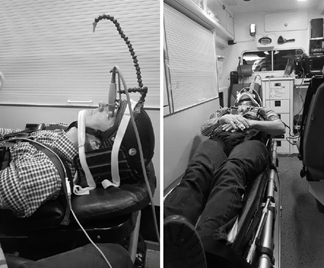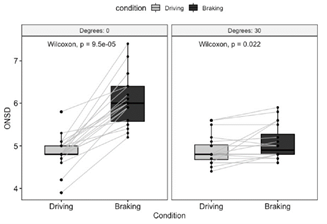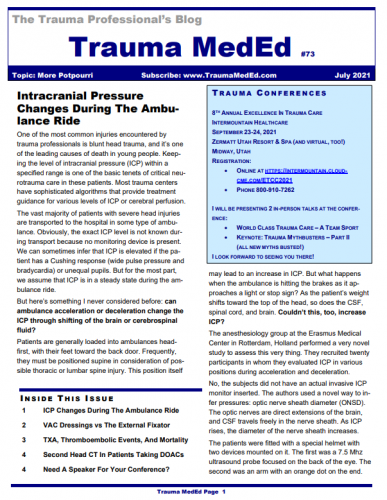Patients with severe TBI are typically managed using staged protocols based on the Brain Trauma Foundation (BTF) guidelines for ICP monitoring. There have been a number of papers over the past six years that question the utility of ICP monitoring, at least using the procedures in the BTF guidelines. Most of these studies do not specifically break out elderly patients.
The group at the Westchester Medical Center in NY used the TQIP database to review the impact of ICP monitoring for severe TBI in patients > 65 years old. They performed a four year database study on these patients with an isolated head injury (no other body regions with AIS > 2), initial GCS < 8, and a length of stay > 24 hours. The examined the presence or absence of an ICP monitor, AIS head score, GCS, and a number of outcome measures.
Here are the factoids:
- A total of 4,433 patients met the above criteria, and 17% had an ICP monitor placed
- After propensity matching for those with and without an ICP monitor, mortality was nearly identical in both groups at 49%
- ICU length of stay, hospital length of stay, and ventilator days were significantly longer in the monitor group
The authors concluded that ICP monitoring in this elderly group of patients did not improve survival and increased length of time in the ICU, hospital, and on the ventilator. The recommend that the current guidelines be improved to recognize these facts.
Bottom line: This is a nice, simple study that sought to answer just a few nice, simple questions. The mortality results are convincingly equal between the groups with and without an ICP monitor. The lengths of stay and ventilator days are statistically significantly longer with p values < 0.001. However, the actual numbers are not provided. I have seen many studies where statistically different numbers are not clinically relevant.
There are a number of papers that have come to similar conclusion on other or broader groups of TBI patients. Although we have specific guidelines on who gets a monitor and what we do with the numbers, there is growing doubt that their use actually helps. Perhaps it is time for us to review the data and make appropriate revisions!
Here are my questions for the authors and presenter:
- Tell us about your propensity score matching. This will help us understand how similar the patient groups really were, with the exception of their ICP monitors.
- Please provide the actual numbers for your lengths of stay and ventilator days. We need to be sure these are clinically and/or financially significant.
- Have the results of this work prompted you to rework your own practice guidelines for treatment of severe TBI? I’m always interested if the group feels strongly enough about their work that they would consider changing their practice based on it.
Reference: ROLE OF ICP MONITORING IN GERIATRIC TRAUMA PATIENTS. EAST 35th ASA, oral abstract #33.



